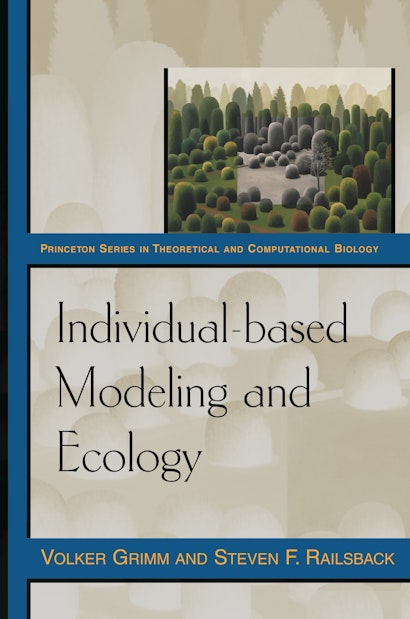Individual-based models are an exciting and widely used new tool for ecology. These computational models allow scientists to explore the mechanisms through which population and ecosystem ecology arises from how individuals interact with each other and their environment. This book provides the first in-depth treatment of individual-based modeling and its use to develop theoretical understanding of how ecological systems work, an approach the authors call “individual-based ecology.?
Grimm and Railsback start with a general primer on modeling: how to design models that are as simple as possible while still allowing specific problems to be solved, and how to move efficiently through a cycle of pattern-oriented model design, implementation, and analysis. Next, they address the problems of theory and conceptual framework for individual-based ecology: What is “theory”? That is, how do we develop reusable models of how system dynamics arise from characteristics of individuals? What conceptual framework do we use when the classical differential equation framework no longer applies? An extensive review illustrates the ecological problems that have been addressed with individual-based models. The authors then identify how the mechanics of building and using individual-based models differ from those of traditional science, and provide guidance on formulating, programming, and analyzing models. This book will be helpful to ecologists interested in modeling, and to other scientists interested in agent-based modeling.
Volker Grimm is a Senior Researcher at the UFZ Centre for Environmental Research Leipzig-Halle and Lecturer at the University of Potsdam. Steven F. Railsback is a consulting scientist and Adjunct Professor of Mathematics at Humboldt State University.
"The authors establish an effective and coherent framework for using individual-based modelling."—Nikita Y. Ratanov, Mathematical Reviews
"An excellent book, which aims to invigorate individual-based modeling . . . by providing a clear theoretical framework for the subject—which they term individual-based ecology (IBE)—and a step-by-step guide to creating individual-based models (IBMs) within this framework. . . . I think this is a very timely book, and I recommend it to anyone new or old to the subject."—Richard Stillman, Quarterly Review of Biology
"The book very successfully link[s] various 'universes' ranging from fundamental concepts in ecology and complex systems research to hands-on technical and recipe-like suggestions on how to build a model, illustrated with numerous, well-chosen examples."—Janine Bolliger, Landscape Ecology
"For anyone who wants to know more about and possibly incorporate IBMs in his own research, this book provides plenty of advice and guidance on how to formulate, analyze, and use such models. If IBMs do ultimately reach the potential envisioned by the authors, their seminal book will have done much to contribute to that success."—Jim M. Cushing, Zentralblatt MATH
"This book establishes an effective and coherent conceptual and technical framework for individual-based modeling with the objective to develop and illustrate an approach for addressing how individual behaviors and system dynamics emerge from lower-level traits."—Janine Bolliger, Landscape Ecology
"Given the solid conceptual foundation of the book and the wide range of IBM applications in fish ecology, I think that many fish biologists will find this book very useful and I recommend it warmly."—Geir Huse, Fish and Fisheries
"This seminal book truly deserves to be called the founding text for the growing field of individual-based modeling and the broader program of individual-based ecology. Core procedures and standards for formulating, parameterizing, testing, and communicating such models have long been lacking. Even the basic definitions have been missing. In one stroke, Grimm and Railsback provide all of those things. Thus, individual-based modeling now has a foundation no less firm than the foundation of classical mathematical ecology."—Don DeAngelis, Biological Resources Division, U.S. Geological Survey, and University of Miami; author of Dynamics of Nutrient Cycling and Food Webs

